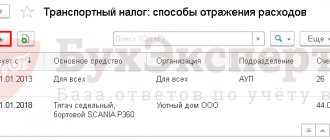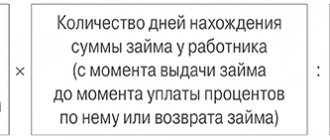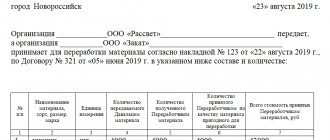What is a bill of exchange?
A bill of exchange is a security containing an obligation to pay its holder the amount specified in it. The features of how a bill of exchange is reflected in accounting are influenced by the fact that it can be:
- own or someone else's;
- simple (drawn up between 2 persons) or transferable (drawn up with the participation of a third party who will make the payment, repaying his debt to the drawer);
- discount (transferred at a price different from that indicated in it), interest (providing for the accrual of a certain percentage on the amount reflected in it) or interest-free (with a zero interest rate);
- a debt obligation, a means of payment, borrowing or investment.
It is extremely important for this document to comply with the requirements for the rules of execution and, in particular, to indicate in it (clauses 1 and 75 of the provisions “On bills of exchange and promissory notes”, approved by Resolution of the Central Executive Committee of the USSR and the Council of People's Commissars of the USSR dated 08/07/1937 No. 104/1341) :
- its name;
- dates and places of its compilation;
- offers or promises to pay a certain amount;
- the name of its payer;
- payment deadline;
- place of payment;
- to whom or on whose order the payment is made;
- signatures of the person issuing the bill.
Acceptable:
- Do not indicate payment deadline. Then the bill is paid upon presentation.
- Do not provide places of origin and payment. In this case, they will be considered the location of the payer, reflected next to his name.
- Additionally, enter information about the interest rate and the start date of its application for a bill of exchange that is interest-bearing.
- The existence of contradictions between the payment amount entered in the bill in numbers and in words. The amount indicated in words will be considered correct.
- Transfer not only a bill of exchange, but also a promissory note.
A bill of exchange can only be issued on paper (Article 4 of the Law of the Russian Federation “On Bills of Exchange and Promissory Note” dated March 11, 1997 No. 48-FZ). The fact of its transfer is reflected in the relevant agreement and act. The existence of an agreement is not necessary when issuing your own bill.
Accounting for own bills
A promissory note is usually issued by the buyer to the supplier in a situation where he cannot pay for the delivery in cash. Such a bill in the relationship between these two parties has the nature of a promissory note and is not taken into account as a security until it is transferred to a third party. Its issue and receipt is reflected by the buyer and supplier on the same settlement accounts as the principal debt. Only the analytics changes:
- from the buyer:
Dt 60calc Kt 60veks,
Where:
60calculation - subaccount for reflecting the debt for supplies,
60veks - subaccount of debt on the issued own bill;
- from the supplier:
Dt 62veks Kt 62calculation,
Where:
62veks - subaccount of debt on the buyer’s own bill of exchange received,
62calculation - subaccount for reflecting the debt for shipment.
At the same time, both parties show the appearance of such a bill on their balance sheet:
- buyer - as security issued:
Dt 009;
- supplier - as security received:
Dt 008.
If the bill is interest-bearing, then income will be accrued on it monthly, increasing the amount of the buyer’s debt on the bill:
- from the buyer:
Dt 91 Kt 60veks,
where 60veks is a subaccount of debt on the issued own bill;
- from the supplier:
Dt 62veks Kt 91,
where 62veks is a subaccount of debt on the buyer’s own bill of exchange received.
Payment on the bill will be reflected as the closure of the debt on it:
- from the buyer:
Dt 60veks Kt 51,
where 60veks is a subaccount of debt on the issued own bill;
- from the supplier:
Dt 51 Kt 62veks,
where 62veks is a subaccount of debt on the buyer’s own bill of exchange received.
At the same time, the bills will be written off from off-balance sheet accounts:
- from the buyer:
Kt 009;
- from the supplier:
Kt 008.
Read more about off-balance sheet accounts in the article “Rules for maintaining accounting records on off-balance sheet accounts.”
Features of bills of exchange as securities
Being an unconditional debt document, a bill of exchange can be:
- Simple, i.e. drawn up between two persons and having the nature of a promissory note of the direct debtor;
- Transferable – a document, the preparation of which takes place with the participation of a third party (used to formalize the transfer of receivables).
Both a simple and a bill of exchange can be:
- Someone else's or your own;
- Discount – interest rate, i.e. providing for an interest rate at which interest will be calculated on the amount of the bill, or interest-free.
Both types of bills of exchange can be commodity, i.e., confirm the debt under a contract for the supply of goods and materials, or financial. In this case, the subject of the transaction is the bill itself. The difference in the purpose of using bills of exchange affects the accounting accounts that will be used to account for bills of exchange.
Accounting for other people's bills of exchange as part of financial investments
The signs of financial investments correspond to bills purchased at a price below par or interest-bearing, i.e. capable of generating income (clause 2 of PBU 19/02, approved by order of the Ministry of Finance of Russia dated December 10, 2002 No. 126n).
They are taken into account in a separate subaccount of account 58-2 (accounting chart of accounts, approved by order of the Ministry of Finance of the Russian Federation dated October 31, 2000 No. 94n) in a valuation corresponding to the amount of acquisition costs (clause 9 of PBU 19/02) or the agreed, market, estimated value ( paragraphs 12–17 PBU 19/02).
Bills of exchange can arrive in several ways, and this will determine the posting of the bill of exchange in accounting. For example:
- when purchasing this security:
Dt 58-2 Kt 76;
- payment by the buyer for delivery by third party bill:
Dt 58-2 Kt 62;
- receiving it as a contribution to the management company:
Dt 58-2 Kt 75;
- property exchange transactions:
Dt 58-2 Kt 91,
Dt 91 Kt 10 (01, 04, 41, 43, 58);
- free admission:
Dt 58-2 Kt 91.
You can see examples of how bills are reflected in accounting in various situations in ConsultantPlus:
Get trial access to K+ for free and proceed to the material.
Since each debt security is individual, bills of exchange are reflected in accounting individually and the valuation upon disposal is made at the cost of each unit. The disposal process is carried out through account 91, forming the financial result from this operation on it. In this case, the debit of account 91 includes the book value of the bill:
Dt 91 Kt 58-2.
And for the credit of account 91, the amount is formed depending on the way in which the disposal occurs. For example, via:
- redemption or sale:
Dt 76 Kt 91;
- payment by delivery bill:
Dt 60 Kt 91;
- contribution to the management company:
Dt 58-1 Kt 91;
- issuing a loan:
Dt 58-3 Kt 91;
- exchange of property:
Dt 10 (01, 04, 41, 43, 58) Kt 91.
The sale of bills of exchange is not subject to VAT (subclause 12, clause 2, article 149 of the Tax Code of the Russian Federation).
Whether it is necessary to keep separate VAT records when transactions with bills of exchange, find out from the Ready-made solution from ConsultantPlus by getting trial access to the system for free.
Income on a bill with an acquisition cost below its face value can be accounted for in one of two ways, the choice between which must be reflected in the accounting policy:
- or the book value of the bill will not change (clause 21 of PBU 19/02) and will be taken into account at the time of its disposal, reflected in the financial result;
- or the increase in the book value to the par value will be done evenly during the circulation period of the bill (clause 22 of PBU 19/02):
Dt 58-2 Kt 91.
Interest on a bill is accrued monthly, but they do not increase the accounting value of financial investments (clause 21 of PBU 19/02) and are therefore reflected in the settlement accounts:
Dt 76 Kt 91.
The amount of this interest will be included in the book value of the bill upon disposal:
Dt 91 Kt 76.
Read about the analytics of account 58 and its relationship with the data of the balance sheet lines in the article “Financial investments in the balance sheet are...”.
UTII
Only certain types of activities are transferred to the payment of UTII (clause 2 of Article 346.26 of the Tax Code of the Russian Federation).
Situation: is it necessary to pay income tax when receiving income in the form of interest (discount) on a bill of exchange received? All activities of the organization have been transferred to UTII.
Yes need.
Only certain types of activities are transferred to the payment of UTII (clause 2 of Article 346.26 of the Tax Code of the Russian Federation). The operation to generate income in the form of interest and discount on a bill of exchange is not named in this list. Accordingly, the financial result from such an operation does not relate to activities on UTII.
Taxes must be calculated on the amount of income received on the bill in accordance with the general taxation system (clauses 9, 10 of Article 274 of the Tax Code of the Russian Federation).
Advice: there are arguments that allow organizations using UTII not to pay income tax on interest (discount) on bills received as payment (security for payment) for goods (work, services). They are as follows.
Income on a bill of exchange received in payment (security of payment) of the counterparty's debt is directly related to the organization's activities on UTII (sale of goods (work, services)). In addition, as a rule, transactions involving settlements with bills of exchange:
- are of a one-time nature;
- are not initially aimed at extracting additional economic benefits (since the bill in this case is a means of payment or a guarantee of payment).
That is, in this case they cannot be interpreted as an independent entrepreneurial activity aimed at generating income (Clause 1, Article 2 of the Civil Code of the Russian Federation).
This point of view is indirectly confirmed by letters from the Ministry of Finance of Russia dated March 7, 2008 No. 03-11-04/3/109, dated December 18, 2007 No. 03-11-05/300, dated December 1, 2006 No. 03-11 -04/3/520 and letters from the Federal Tax Service of Russia in Moscow dated November 6, 2007 No. 20-12/105713 and dated September 8, 2005 No. 20-12/64161. They expressed a similar opinion regarding the accounting of other non-operating income of the organization on UTII (amount of insurance compensation, supplier bonuses for purchases, bank interest on the current account, exchange rate differences).
However, it is possible that such a point of view will lead to a dispute with tax inspectors. Particularly if the third party's note is subsequently realized rather than repaid. In this case, it will have to be defended in court (Article 138 of the Tax Code of the Russian Federation). Arbitration practice on this issue has not yet developed.
Accounting for other people's bills that are not financial investments
Interest-free bills purchased at par or at a price above par do not meet the profitability condition established for accounting for them as financial investments (clause 2 of PBU 19/02). For this reason, they are not taken into account in account 58, but in calculations using account 76.
The ways of their receipt and disposal may be the same as for revenue bills, but in the receipt transactions, instead of account 58, account 76 will be used, and from account 76, when such bills are retired, their accounting value will be written off to the debit of account 91.
About the features of accounting for settlements with bills when applying the simplified tax system, read the material “List of expenses under the simplified tax system “income minus expenses”” .
OSNO and UTII
If an organization applies the general system and pays UTII, then the taxation of income on the bill does not depend on the activity within which it was received. From the income received, calculate taxes in accordance with the general taxation system (clause 2 of article 346.26, clauses 9 and 10 of article 274 of the Tax Code of the Russian Federation).
At the same time, keep in mind that there are arguments that allow you not to pay income tax on interest (discount) on bills received in payment (security of payment) for goods (work, services) sold within the framework of activities transferred to UTII.
Results
Bills of exchange in accounting have their own reflection features. These features are due both to the existence of one’s own and other people’s bills, and to the division of the latter into profitable and non-income-generating.
Sources:
- Federal Law of March 11, 1997 N 48-FZ
- Order of the Ministry of Finance of Russia dated December 10, 2002 N 126n
- Tax Code of the Russian Federation
You can find more complete information on the topic in ConsultantPlus. Free trial access to the system for 2 days.
BASIS: VAT
If a bill of exchange (of a third party, your own) is received as payment for goods (work, services) that are subject to VAT, the interest (discount) on the bill increases the tax base for VAT. However, the tax must be charged not on the entire amount of interest (discount), but only on that part of it that exceeds the amount of interest calculated at the refinancing rates in force in the periods for which the calculation is made. Moreover, tax must be calculated only at the time of receiving interest (discount). This procedure follows from subparagraph 3 of paragraph 1 of Article 162 of the Tax Code of the Russian Federation.
For more information on calculating VAT on interest and discount on a bill of exchange, see How to pay VAT when paying by bill of exchange.
Situation: when repaying a bill of exchange, can the holder of a bill of exchange take into account, when calculating income tax, the amount of VAT accrued on the difference between the amount of interest (discount) on the bill of exchange and interest calculated based on the refinancing rate?
Yes maybe.
The organization has the right to take into account as other expenses the amounts of taxes accrued as required by law (subclause 1, clause 1, article 264 of the Tax Code of the Russian Federation). An exception is the mandatory payments listed in Article 270 of the Tax Code of the Russian Federation.
Clause 19 of Article 270 of the Tax Code of the Russian Federation establishes that when calculating income tax, taxes imposed on the buyer (acquirer) of goods (work, services, property rights) are not taken into account. However, the holder of the bill presenting the bill for redemption is not the buyer of goods (work, services, property rights) under the transaction concluded by the parties (Article 815 and paragraph 1 of Article 807 of the Civil Code of the Russian Federation). Consequently, the provisions of paragraph 19 of Article 270 of the Tax Code of the Russian Federation do not apply to relations regarding the repayment of a bill of exchange.
Since the Tax Code of the Russian Federation does not contain any other restrictions, the amount of VAT accrued upon repayment of a bill can be taken into account in reducing taxable profit (subclause 1, clause 1, article 264, clause 1, article 252 of the Tax Code of the Russian Federation). When applying the accrual method, this can be done immediately after VAT is accrued to the budget (subclause 1, clause 7, article 272 of the Tax Code of the Russian Federation). When using the cash method - after payment (subclause 3, clause 3, article 273 of the Tax Code of the Russian Federation).






